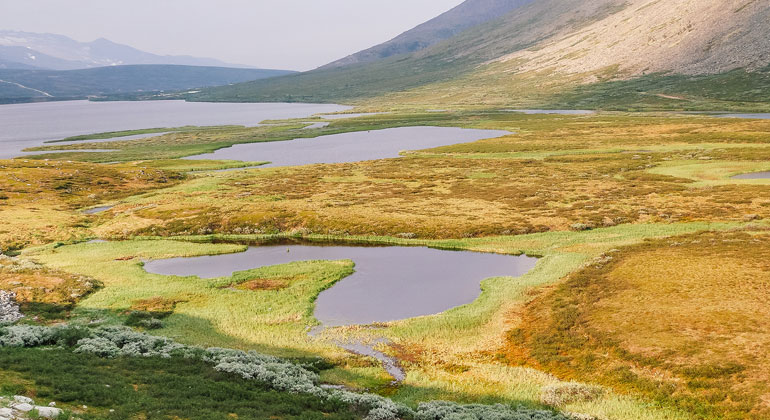Thawing Arctic Permafrost: One of the Five Largest Threats to the Environment
The new report “Frontiers 2018/19: Emerging Issues of Environmental Concern” issued by the United Nations’ Environmental Programme (UNEP) defines five pressing but hitherto underestimated environmental threats.
Approximately 23 million square kilometres of the world’s northern regions are subject to permafrost – ground that remains at sub-zero temperatures all year round. These are mainly peat soils, which – if frozen – store about half of the carbon that is locked in soils worldwide. When they thaw due to the warming climate, the carbon is released into the atmosphere as greenhouse gases (carbon dioxide and methane). In recent decades, the southern boundaries of the permafrost regions have receded northwards by 30 to 80 km – a significant loss in coverage.
Thawing and dry (often drained) peatlands hold additional dangers: Peat fires, which can burn underground for months and are hard to extinguish, cause further emissions and pose a health risk to people living in large-scale regions. Mining, agriculture and growing infrastructure projects are another menace to permafrost, which also serves as living space for indigenous people.
Thawing permafrost is considered one of the tipping points in global warming. The report sees the Arctic permafrost and its peatlands already subject to rapid changes and calls for urgent protection, conservation and prudent management of permafrost peatlands.
Aside from detailed background information, the report offers a new circumpolar map on the distribution of permafrost and Arctic peatlands based on the Global Peatland Database of the Greifswald Mire Centre.
Further information
The UNEP’s “Frontiers” reports address environmental threats that are of global importance and are yet to have been recognised and dealt with sufficiently. The report is published in six languages and made available to governments and environmental institutions all over the world.








